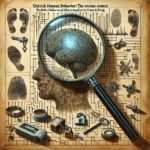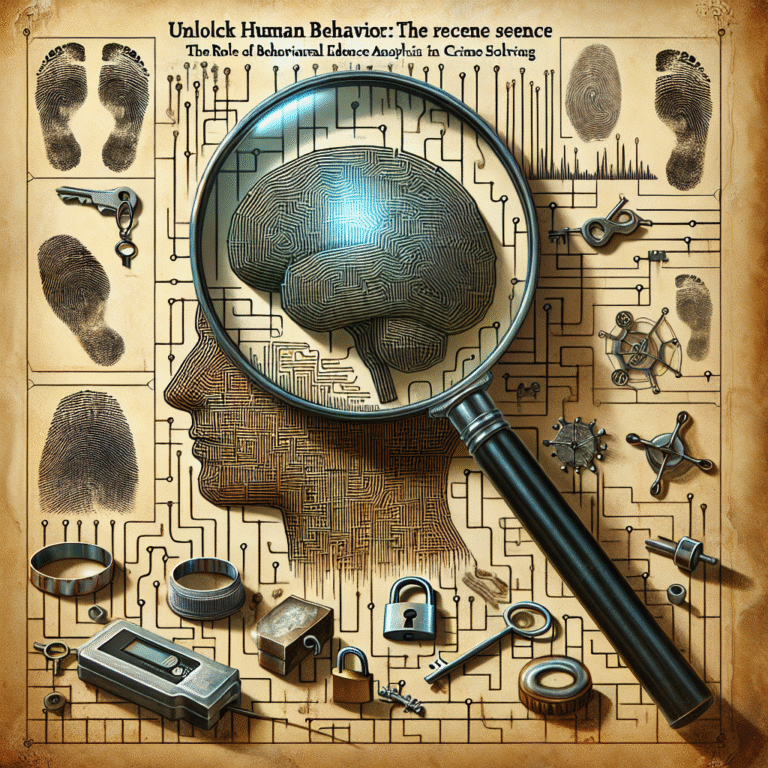
Introduction
The criminal justice system serves as the bedrock of societal order, aiming to uphold justice and maintain peace. But what happens when the very tools designed to uncover the truth become sources of misinformation? At the core of this dilemma lies the concept of deception detection—an essential, yet often misunderstood component within the realm of law enforcement and legal proceedings. With the ever-present need for accuracy in criminal investigations, understanding the role of deception detection in criminal justice is more crucial than ever.
In this comprehensive article, we will explore various myths and realities surrounding deception detection, backed by case studies and analytical insights. From polygraph tests to behavioral cues, we’ll dissect how deception detection shapes legal outcomes and public perception. Let’s delve into this intriguing intersection of psychology, law, and technology.
Understanding Deception Detection
What Is Deception Detection?
Deception detection refers to the methods employed to determine whether an individual is being deceptive or truthful. This can encompass a wide array of techniques including:
- Polygraph Tests: Often regarded as the gold standard in lie detection, these tests measure physiological responses to questions.
- Behavioral Analysis: Observing body language and micro-expressions can provide important clues about a person’s truthfulness.
- Statement Analysis: Evaluating the language used in a person’s statements can reveal inconsistencies or signs of deceit.
Each of these methods comes with its sets of advantages and limitations, which complicates their application in real-world scenarios. Understanding their role in criminal justice is vital to separating fact from fiction.
Myths Surrounding Deception Detection
Myth 1: Polygraphs Are Foolproof
One of the most prevalent myths about deception detection is that polygraphs are infallible. The truth is, while polygraphs can be a useful tool, they are not 100% reliable. Research indicates that polygraphs can yield false positives as much as 20% of the time, meaning that innocent individuals could be falsely accused of lying.
Myth 2: Behavioral Cues Are Universal
Another common misconception is that certain behaviors universally indicate deception. For example, nervous fidgeting or avoiding eye contact are often misinterpreted as signs of lying. However, cultural differences can greatly affect how individuals express themselves. Not all nervous behaviors suggest deceit, as they may simply be manifestations of anxiety.
Myth 3: Deception Detection Can Replace Traditional Investigative Techniques
Some believe that using deception detection techniques can supplant traditional investigative methods such as interviews or forensic evidence. In reality, deception detection is most effective when used in conjunction with thorough investigations. It should serve as a supplementary tool rather than a standalone solution.
The Realities of Deception Detection
Validity of Deception Detection Tools
Despite the myths, related studies have shown that while deception detection tools are imperfect, they can still offer valuable insights. For instance, a meta-analysis published in the journal Law and Human Behavior demonstrated that trained interviewers could better identify deception than untrained individuals, proving that expertise can enhance accuracy.
Case Study: The Use of Polygraphs in Law Enforcement
Consider the case of the Kentucky State Police, who incorporated polygraph testing as a means to screen candidates. The department found that those who passed the polygraph were better suited for roles involving sensitive operations. This case illustrates the potential benefits of deception detection when applied appropriately, emphasizing that while flawed, these instruments can still aid decision-making in police recruitment.
| Method | Accuracy Rate | Key Indicators |
|---|---|---|
| Polygraph | 75-90%* | Heart rate, respiration, galvanic skin response |
| Behavioral Analysis | Varied | Eye movement, facial expressions, body posture |
| Statement Analysis | 70-85% | Inconsistencies, detail richness |
*Accuracy rates vary depending on the context and expertise involved.
Social Implications of Deception Detection
In criminal justice, the consequences of misjudging truthfulness can ripple through the community. For example, the high-profile case of Amanda Knox involved internal investigations that hinged on perceived deception, tainting public perception long before legal truths emerged. This serves as a poignant reminder that the role of deception detection in criminal justice cannot be understated—it has real consequences for lives and reputations.
Reality: The Need for Professional Training
Training police officers and investigators in the nuances of deception detection can significantly improve outcomes. A well-rounded understanding of psychological cues and behavioral indicators can empower law enforcement to make more informed decisions. Continuous education programs that emphasize critical thinking and skepticism can reduce the reliance on questionable methods.
Technological Advances in Deception Detection
The Rise of AI and Machine Learning
In recent years, technology has begun to play a major role in deception detection. AI algorithms can analyze speech patterns and vocal characteristics to assess the likelihood of deceit. For example, software like Credibility Assessment System analyzes speech content, revealing hidden tensions in responses.
Predictive Policing
Further developments have introduced predictive policing, where data analytics can forecast potential criminal behavior. While not directly related to deception detection, understanding behavioral patterns can enhance the efficacy of traditional investigative methods.
Ethical Considerations in Deception Detection
Privacy Issues
The intersection of technology and deception detection raises significant ethical questions about privacy. With wearables monitoring physiological data in real-time, concerns about continuous surveillance and consent are paramount. Balancing public safety with individual rights creates a challenging landscape for law enforcement agencies.
Consequence of Misuse
The misuse of deception detection techniques can lead to wrongful accusations and a breach of trust between law enforcement and communities. Training must include ethical dimensions to ensure that methods are employed judiciously and fairly.
Conclusion
The landscape of deception detection in criminal justice is laden with myths and realities that demand careful exploration. Understanding the strengths and limitations of various techniques is crucial for their effective application. As advancements in technology pave the way for new tools, the integration of deception detection must remain ethically sound and grounded in rigorous training.
Takeaway
As members of society, we can contribute by advocating for transparency and accountability in law enforcement practices. Raising awareness about the myths associated with deception detection empowers individuals to critically engage with information, fostering a more informed citizenry.
FAQs
1. Is it possible to train someone to detect lies accurately?
Yes, extensive research shows that trained professionals often outperform untrained individuals. However, being trained does not guarantee 100% accuracy as deception detection is complex.
2. Are polygraph tests used in court?
Polygraph tests are generally not admissible in court due to their controversial accuracy but can be used as investigatory tools by law enforcement.
3. How does culture affect deception detection?
Cultural factors can influence how people express themselves, making it crucial not to rely solely on behavioral cues.
4. Can AI really detect lies?
Emerging technologies show promise in analyzing speech and behavior for signs of deception but are not foolproof and should be used alongside traditional investigative methods.
5. What should individuals know about their rights regarding deception detection?
Individuals should be informed about their rights when undergoing deception detection tests, especially regarding consent and data privacy. It’s essential to understand the circumstances under which they are being tested.
As we navigate the complex web of law enforcement, understanding the role of deception detection in criminal justice is essential. By dismantling myths and embracing realities with a critical eye, we can build a more just society grounded in truth and transparency.















